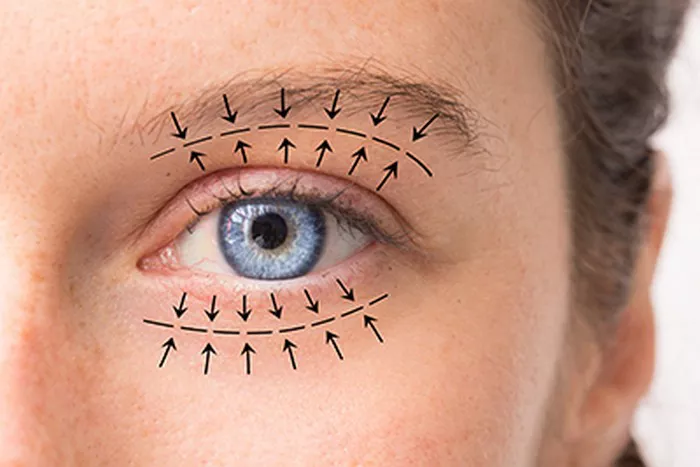Ptosis, commonly referred to as droopy eyelids, can have both functional and cosmetic implications. This condition occurs when the muscles responsible for lifting the eyelids weaken, causing them to appear droopy and potentially obstructing vision. Ptosis surgery is a corrective procedure that aims to restore the natural position and function of the eyelids. One common concern among individuals considering ptosis surgery is the cost associated with the procedure. In this article, we will explore the factors that influence the cost of ptosis surgery and provide a general understanding of its expenses.
Understanding Ptosis Surgery
Ptosis surgery is a specialized procedure performed by ophthalmologists or oculoplastic surgeons. Its primary goal is to correct droopy eyelids by tightening the muscles responsible for eyelid elevation. The surgery typically involves making small incisions in the natural creases of the eyelids to access and adjust the underlying structures.
There are different surgical techniques available, depending on the severity of the ptosis and the specific needs of the patient. In some cases, the surgeon may also need to address other issues, such as excess skin or fat in the eyelid area, which can contribute to the droopiness.
Ptosis surgery can have functional benefits, such as improving vision by raising the eyelids and enhancing the field of view. Additionally, it can have cosmetic advantages, as it restores a more youthful and alert appearance to the eyes.
Factors Influencing the Cost
The cost of ptosis surgery can vary significantly depending on several factors. While it is challenging to provide an exact price without a thorough evaluation, the following elements typically influence the overall cost:
- Surgeon’s expertise and experience: The credentials, experience, and reputation of the surgeon performing the procedure can affect the cost. Highly experienced surgeons who specialize in oculoplastic surgery may charge more for their expertise and track record of successful outcomes.
- Geographical location: The cost of ptosis surgery can vary based on the geographic location where the procedure is performed. Areas with a higher cost of living and increased demand for specialized medical services may have higher surgical fees.
- Facility fees: The fees associated with the surgical facility where the procedure takes place can impact the overall cost. These fees may include the use of the operating room, anesthesia services, and post-operative care.
- Pre-operative evaluations and tests: Before undergoing ptosis surgery, patients typically require a comprehensive evaluation to assess their eyelid condition. These evaluations may include specialized tests, such as visual field testing or imaging studies, to determine the severity of the ptosis and the appropriate surgical approach. The costs of these evaluations and tests can contribute to the overall expense of the procedure.
- Anesthesia fees: Ptosis surgery is commonly performed under local anesthesia, which is less expensive than general anesthesia. However, the type of anesthesia used and the duration of the procedure can influence the anesthesia fees.
- Extent of correction needed: The complexity and extent of the ptosis correction required can impact the cost. More severe cases of ptosis or individuals with additional eyelid concerns, such as excess skin or fat, may require more extensive surgical techniques, resulting in a higher cost.
- Post-operative care and medications: Following ptosis surgery, patients will require post-operative care, including follow-up visits, medications, and potential eye care products. These additional expenses should be considered when calculating the overall cost of the procedure.
Average Costs of Ptosis Surgery
It is important to note that the costs provided here are general estimates and can vary depending on the factors mentioned above and individual circumstances. On average, ptosis surgery can range from $2,500 to $6,000 or more. This estimate typically includes surgeon’s fees, facility fees, anesthesia fees, and follow-up care. However, it may not encompass pre-operative evaluations, tests, or additional treatments that may be necessary.
It is advisable for patients to consult with a qualified ophthalmologist or oculoplastic surgeon for a personalized evaluation and cost estimate. During the consultation, the surgeon will assess the individual’s specific needs, discuss the surgical options, and provide a detailed breakdown of the anticipated costs.
Insurance Coverage and Financing Options
In some cases, ptosis surgery may be deemed medically necessary if the droopy eyelids significantly obstruct vision. In such instances, insurance coverage may apply, covering a portion or all of the surgical expenses. However, insurance coverage criteria and requirements can vary, and pre-authorization may be necessary.
For individuals without insurance coverage or those seeking cosmetic ptosis surgery, various financing options may be available. Some surgeons offer payment plans or work with financing companies that specialize in medical procedures to help patients manage the cost of surgery.
Conclusion
Ptosis surgery can improve both the function and appearance of droopy eyelids. The cost of ptosis surgery depends on various factors, including the surgeon’s expertise, geographical location, facility fees, pre-operative evaluations, anesthesia fees, and the extent of correction needed. On average, ptosis surgery can range from $2,500 to $6,000 or more. It is essential for individuals considering ptosis surgery to consult with a qualified surgeon to obtain a personalized evaluation and an accurate cost estimate. Insurance coverage and financing options may also be available to help manage the expenses associated with the procedure.


